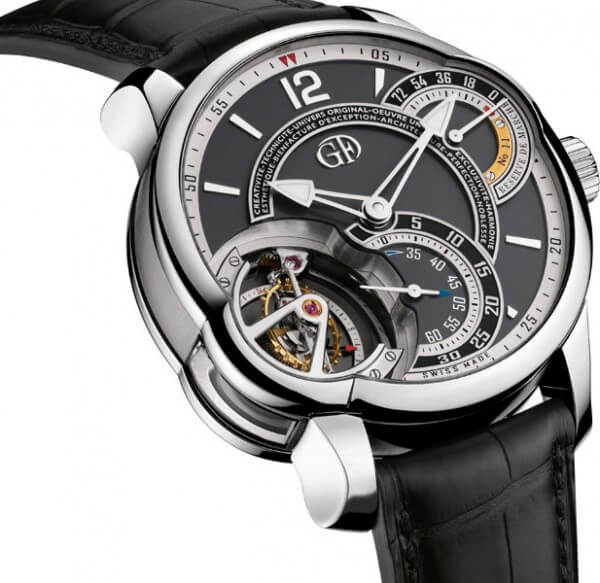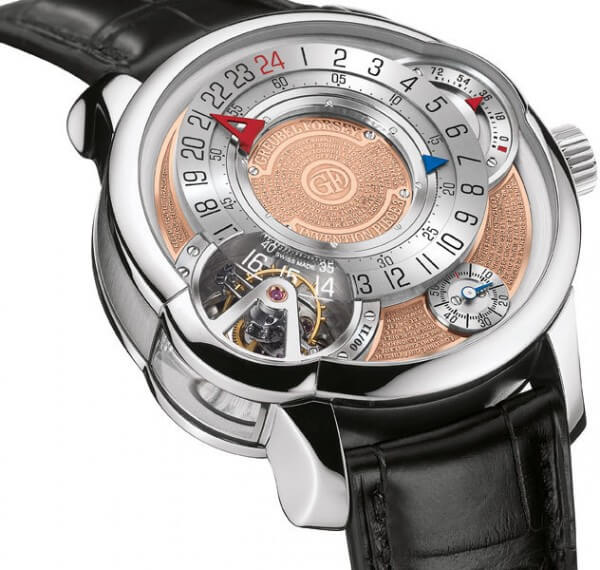In most parts of the world, especially in Europe and Asia, a nice timepiece is a de rigueur announcement that one has achieved a level of success and refinement. Those in the United States, however, preferred to exhibit their accomplishment to society in other ways, such as by racing around in European sports cars and hanging expensive art on the walls. “During the last 10 years or so, people in the United States have progressed very much in their level of interest in Haute Horlogerie, and particularly in their knowledge as well,” observes Stephen Forsey, the creator, along with Robert Greubel, of the brand Greubel Forsey. “It is also this increased interest and knowledge that has allowed the flourishing of creativity and the emergence of new brands.”
Three inventions
Though Americans were slow to respond, the seeds of interest were always there to be fertilized, if lying dormant. After all, Americans were born from the spirit of adventure and the desire to develop breakthroughs on all levels, from the political and religious to the artistic and technical. From its inception, Greubel Forsey was established to improve the performance in a mechanical watch. “While there are still many areas that have not been invented, the tourbillon remains one of the most prestigious and intriguing complications,” Forsey says of the decision to focus attention on this element. Invented by Abraham-Louis Breguet and officially patented in 1801, the tourbillon mechanism places the balance wheel in a rotating cage in order to equalize the forces of gravity on the balance spring and thus improve timing.
The tourbillon is the hallmark of a Greubel Forsey timepiece, and so far they have presented three inventions showcasing their research: the Double Tourbillon 30° (2004), the Quadruple Tourbillon (2005) and the Tourbillon 24 Seconds (2006). It has been argued that the tourbillon is an anachronistic and unnecessary—not to mention pricey—complication. In response, Greubel Forsey demonstrates through carefully controlled experiments that the tourbillons in their watches do significantly reduce errors. Forsey bolsters the argument of the complication’s relevance by pointing out that the two highest performing timekeepers in the Chronometrie 2009 International timing competition for mechanical wristwatches incorporated the tourbillon.

A production of 100 pieces a year
Nonetheless, Greubel Forsey are not content just to advance the technology of mechanical timepieces, they also want to exhibit the epitome of classic artistic beauty. Their commitment to the finishing arts is indicated by the fulltime employment of 16 people devoted to just this aspect of the movement creation—and can be fully appreciated by the play of light as it shimmies across the sharp and flawlessly polished angles of the bridges. But a watch isn’t just a movement, so Greubel Forsey put just as much thought and emphasis on the housing. “It is also important to keep these unique inventions in a case that is equally exceptional, both in the architecture and craftsmanship,” Forsey says. The result is cases with intricate engraving and the now characteristic bulge in some models to accommodate the tourbillon mechanism. Putting this level of time and handcraft into their timepieces physically limits the production of Greubel Forsey to 100 watches per year at a maximum. All of this comes at a price. Their timepieces start at several hundred thousand dollars and reach upwards of three-quarters of a million.

Find the appropriate partner
In the United States, Forsey sees a receptive audience for his watches. “North American customers are generally oriented towards two aspects, aesthetics and technicalities.” And yet, for that amount of money—more than some people pay for a home in many parts of the country—a potential customer needs to understand and appreciate the value in order to execute such a large transaction. That’s why it was so crucial for Greubel Forsey to find the appropriate partner to introduce their exclusive product to the market. “Our retailers should be those that have a good knowledge of Haute Horlogerie and the understanding of Greubel Forsey tourbillons,” Forsey says. “Additionally, it is important that there is a presentation framework in line with the product, an appreciative clientele, and finally a sharing of the same values.”
Greubel Forsey made a good decision entrusting their timepieces to John Simonian. Owner of the influential Westime boutique in Los Angeles, Simonian already had a lot of experience with high-end brands as a retailer. Additionally, he had already successfully introduced and distributed the very technical (and expensive) Richard Mille in the U.S. Greubel Forsey was officially created in 2004, and at the end of that year Simonian, through his company Ildico, Inc., became the U.S. distributor as well as one of its retailers. Considered the man with the golden touch, Simonian gained a reputation for promoting unknown or start-up brands that nobody else would touch and igniting them in the U.S. market. (He also distributes Urwerk, MCT, HD3, Alain Silberstein, and most recently, Vincent Berard.) From the customer response in the last six years, it’s clear Greubel Forsey and Simonian made the right assessment.













